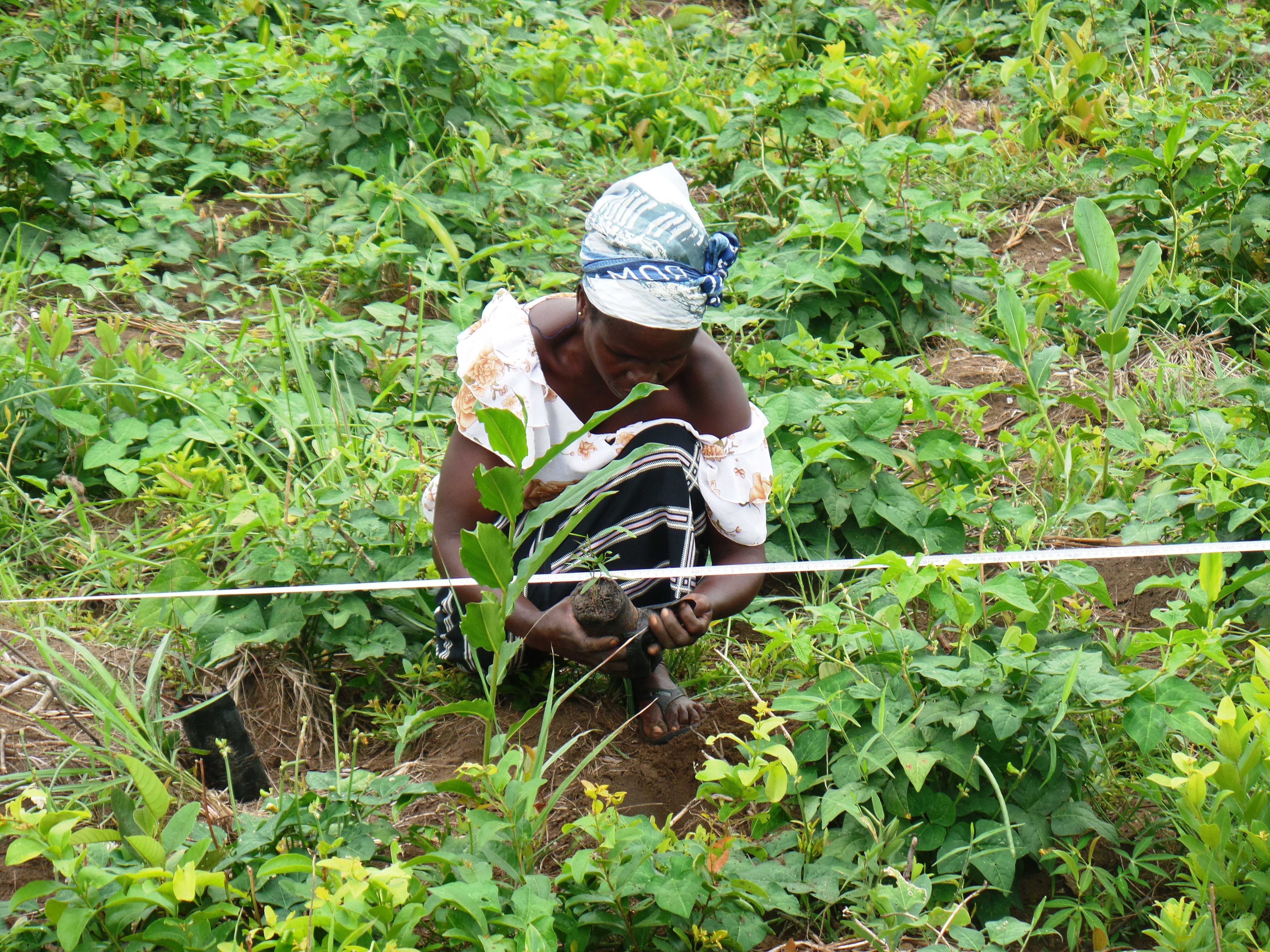

Le reboisement et la revégétalisation ont été entrepris sur des pentes dégradées et autour d'un site de traitement des eaux afin de réduire l'érosion et les risques d'inondation. Des pépinières communautaires ont été créées afin de fournir des plants pour le reboisement et l'agroforesterie.
L'agroforesterie communautaire a été mise en place sur 15 hectares afin d'apporter un soutien supplémentaire aux moyens de subsistance de 20 ménages. Elle est basée sur un cycle de rotation de 8 ans de culture et de sylviculture (sur 8 parcelles, une ajoutée chaque année), ce qui permet une gestion durable des terres et la réduction de l'érosion des sols. Trois types de plantes sont cultivés dans une parcelle donnée, à savoir l'acacia, le manioc et le niébé, qui apportent des bénéfices complémentaires. L'apiculture est également pratiquée. Le produit de tout cela augmente le revenu annuel de tous les ménages, qui le gèrent ensemble. Les ménages, le propriétaire foncier et l'association ont conclu un accord selon lequel 50 % des rendements reviennent aux agriculteurs, 25 % à l'association et 25 % au propriétaire foncier.
Revenu attendu d'un hectare, année 1 : 3 000 USD provenant de la production de 100 sacs de charbon de bois à partir de souches + 6 250 USD provenant de la récolte de 2 500 kg de niébé ; année 2: 9 615 USD provenant de 6 410 kg de manioc ; années 3 à 7: 7 000 USD pour 1 000 litres de miel ; année 8: 35 000 USD pour 1 750 sacs de charbon de bois produits à partir d'acacias matures.
La méthode d'évaluation "Integrated Valuation of Environmental Services and Tradeoffs" (InVest) a été utilisée pour déterminer les sites d'intervention sur le terrain en modélisant le potentiel d'érosion du sol en fonction de différentes options de gestion. Les exigences relativement faibles en matière de données du modèle InVest et le fait qu'il prenne en compte les caractéristiques géophysiques et écologiques de la zone pour mesurer le potentiel d'érosion du sol font que le modèle InVest convient parfaitement à la planification de l'EbA/Eco-DRR et aux pays pauvres en données.
Il est important pour l'adhésion de la communauté d'offrir des avantages multiples et d'en fournir des preuves tangibles. Avant le projet, la production de charbon de bois et l'agriculture sur brûlis constituaient les principales activités. Les agriculteurs ne connaissaient pas l'agroforesterie et estimaient que les terres choisies pour le projet ne se prêtaient pas à l'agriculture.
Le succès global du projet a été démontré par la forte adhésion de la communauté aux interventions, guidée par des partenaires locaux expérimentés, et par le taux de survie élevé (98 %) des arbres agroforestiers plantés.
Toutefois, comme il s'agissait de sites de démonstration, les membres de la communauté qui n'ont pas été choisis et qui n'ont donc pas eu accès aux avantages ont été mécontents. Dans un cas, un feu a été délibérément allumé pour détruire un site de reboisement. À l'avenir, il est donc important de tenir compte des sensibilités locales et de veiller à ce que les bénéfices du projet soient partagés aussi largement que possible, afin de minimiser les conflits entre les utilisateurs des ressources. Cela met également en évidence les limites des projets pilotes.